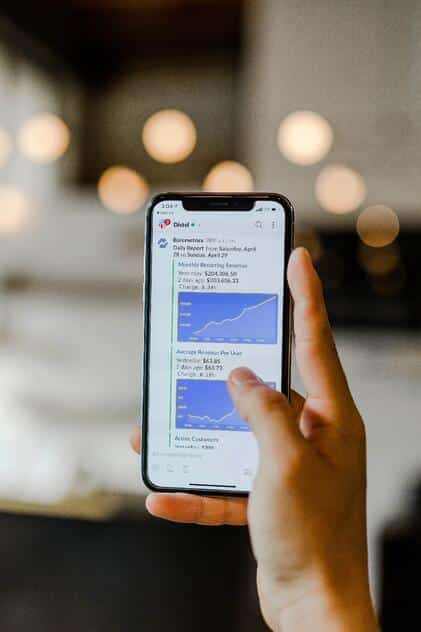Why one small step for big data really is a giant leap for mankind
The thing about mastering analytics is that the “master status” only lasts until the next iteration –just ask any SEO expert after a Google Search algorithm update if they’re still an expert. New technologies
with new capabilities emerge, allowing us to do more with less. In turn, these create new best practices. As the world’s population increasingly prefers to shop, read, and watch on mobile devices, the big question for just about every business is: what are the best mobile analytics practices today?

Reimagine data roles. Leading companies know software changes can be painful, but they outperform the competition because they pull off the bandaid before everyone else. Salesforce swallowed Tableau without thinking about how to improve it, and newer options on the market are exploiting those weak spots–which is why we’re seeing cutting-edge companies making a switch.
Current software only gets the user so far, obligating businesses to hire high-priced data analysts. Often just a few data scientists act as the point of contact for an entire company, and data-based strategy becomes a slower process than it should be. Businesses are realizing this is not scalable, nor is it agile.
Newer software means best practices can involve moving the middle man and democratizing data. Companies can now provide access to data analytics capabilities across departments and roles. This more affordable, and taps into different ways of thinking to address a broader goal set. But this type of business analytics needs user-friendly software that the non-tech-savvy employees will use, while also leveraging modern Artificial Intelligence, Machine Learning, and automation to supplement skill sets.
Tip: Look for comprehensive software that offers the best blend of AI, ML, automation, and reporting tools–and avoid ones that require professional or specialty help to use regularly. Opt for a third-party service to make your data easy to consume so that everyone can be an expert on their own.
Prioritize quality over quantity. It used to be that companies couldn’t have too much data, but today brands see that they’ve fallen victim to the allure of endless data dimensions, becoming distracted from the benchmarks that matter most. For example, companies always look at the gender of their users to see if there is a preference trend there. That makes sense for some business intelligence seekers, but if the majority of the company’s user base is gender-specific (e.g. Pinterest), the gender KPI isn’t a decisive factor. Newer tech like Augmented Analytics ensures the AI will be smart about data specific to mobile businesses (for example, comprehension of the website’s seasonal peaks or historically low-activity days among different demographics).
Two practices are helping businesses use quality data. First, they’re ditching monitoring systems that do nothing but flag potential issues. Newer offerings will flag suspicious activity and solve the mystery–which saves time and money.
Second, maintaining data quality is a hugely important practice–and it’s here to stay. Where a handful of data scientists answer the queries of an entire corporation, real-time analysis becomes impossible. When two people involved in data analysis understand the same term differently, that compromises data quality. Finally, any business that outsourced ownership of its data is potentially operating in a black box–and data quality needs some light.
Tip: Look into analytics software that can alert and explain anomalies before anyone wastes time troubleshooting them. Second, maintain a data dictionary–a shared set of definitions for terms around all data and events within your system. Mobile businesses release once or twice a week, so this should be based on continuous updates.

Care about collaboration. If it’s one thing the 2020 workplace needs, it’s efficient collaboration technology. As more of us now work remotely, we can no longer have those in-the-moment idea shares and quick hallway conversations (you know, the ones that can lead to a breakthrough).
The best practice is to keep communication around data within the analytics tool itself because it is easier to follow several chains of thought. While sending screenshots on a Slack channel or in an email thread seem like quick fixes, people get lost in those message streams. If someone misses “Version 2.2” and looks up from their work by the time “Version 2.4” is already circulating, there tends to be a lot of confusion and duplicated efforts.
Tip: Change workflows to bring all data analytics conversations inside the analytical tool itself (and don’t skip report generation features. This way, team members know where data and subsequent actions are coming from, from query to the data source.





